
 5
5





![Filename: willies-rocket.jpg
Description: [Thumbnail for willies-rocket.jpg]](/t/58088/a/42389/willies-rocket.jpg)
 1
1




regards, Peter




![Filename: wood-drying.png
Description: [Thumbnail for wood-drying.png]](/t/58088/a/42364/wood-drying.png)
My books, movies, videos, podcasts, events ... the big collection of paul wheaton stuff!




Peter van den Berg wrote:I'm assuming the shed need to get an hot air (or exhaust gases from the rocket) inlet and an exhaust to vent the moist outside. There's a problem in this respect, wood combustion produces water as a byproduct, close to 1/2 liter for every kilogram of fuel. Adding this to the process means the wood or food is expected to dry by adding moist hot air.
What I would do is building a thin metal canister inside the (middle of) the shed, for example three 200 liter barrels on top of each other. Some lids cut out in order to create a single cylinder which is open inside and closed at the top and bottom only. When the rocket feeds low or maybe halfway up into that cylinder and exhausted close to the bottom and out of the shed into a chimney stack it would act as a bell system. It will get awfully hot inside the shed without adding water vapor. While the fire wood or food is stacked around the barrel but not touching it, I imagine it would dry quite quickly. Especially when the shed is equipped with low exhaust opening to get rid of the moist. In fact, the shed itself could be acting as a bell system as well when the exhaust opening is equipped with a chimney stack higher than the shed itself.
An example of of such a barrel tower can be found here and how a bell works can be found here.
I might be mistaken about the intricaties of wood drying in the tropics but I think the above is worth consideration.





My books, movies, videos, podcasts, events ... the big collection of paul wheaton stuff!




paul wheaton wrote:I just got off the phone with Olof.
Here is my feeble attempt at a design.
I want to keep the barrel inside a big stratification chamber. The wood sits on top of the stratification chamber. The wood is the mass.
So the building would have two parts. One part is where you put the wood. It has small vents at the top and bottom. The lower part is the stratification chamber.
The heat is spread out evenly in the stratification chamber - all of the wood is heated evenly.
 .. thanks for the feedback i think the stratification chamber idea is very cool,
.. thanks for the feedback i think the stratification chamber idea is very cool,










paul wheaton wrote:Olof, maybe you can make a sketchup (or something similar) of what i drew?




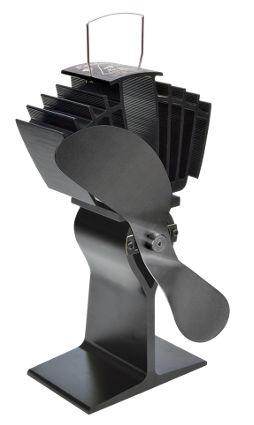













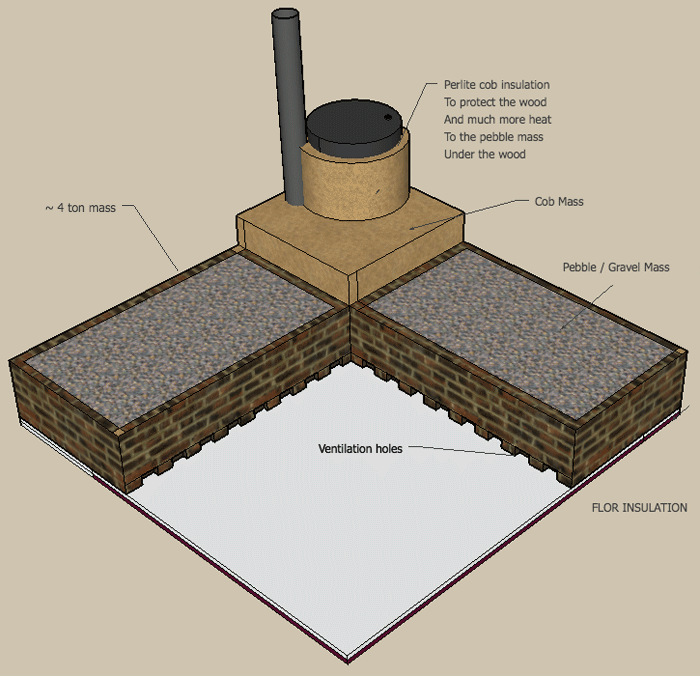
 1
1








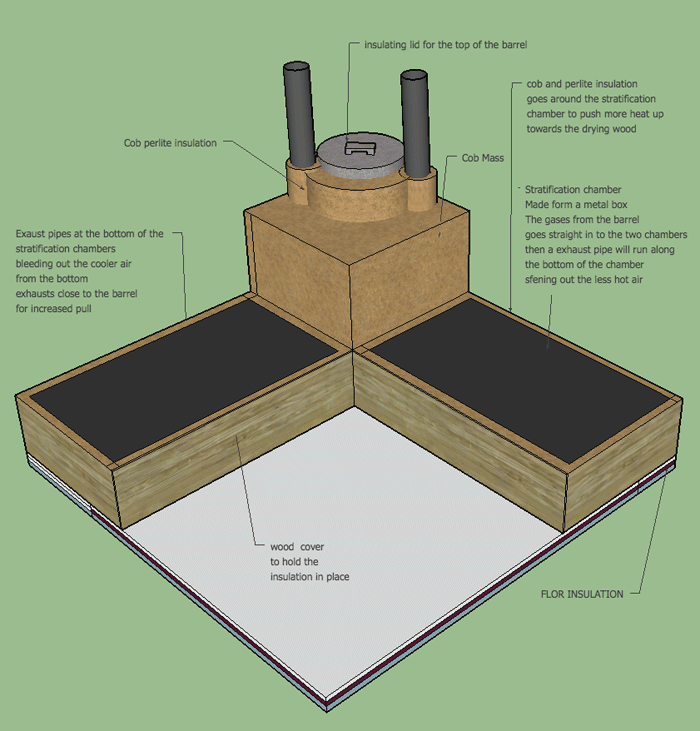




Alan Loy wrote:I know this may be a dumb question but have you thought about solar kilns. http://www.solarkilns.com/timber_drying/index.htm
Building a new structure (could be black painted corrugated iron) may be better than burning wood to dry wood. Tobacco curing sheds that are tall are a design with a good air flow might work even with high humidity. http://www.mountaincreekarch.com/images/Tobacco%20shed%20refurbish%20%20186%20Pic%20Charlie%20BrownAnd2more_tonemapped.jpg
Even if you need supplementary heating from a rocket stove these tall designs with airflow in at the bottom and out at the top would provide airflow to promote drying
 i don't think its a dumb question at all ..I much rather use the sun instead of burning wood too ... I asked that same question my self when we got here and basically the reason is
i don't think its a dumb question at all ..I much rather use the sun instead of burning wood too ... I asked that same question my self when we got here and basically the reason is

 1
1




regards, Peter




Peter van den Berg wrote:A bell is a stratification chamber in itself so I think the whole drying shed could be utilised as such a chamber.
Extracting moist from wood is done best at the end grain, so I envisioned the fuel stacked around the heat source as the rays of the sun. The heat is highest on top, the fuel (or fruit) would be drying top down, which is also the direction of the air stream since the exhaust vent of the shed is also close to the floor. At first, at floor level vapour would condensate so this fluid could be drained before it would evaporate again, making the whole process much more efficient.
Just some thoughts.
 ... and also had a go at mimicking your batch heater too in the same floor plan i have been using for the other designs i have posted...
... and also had a go at mimicking your batch heater too in the same floor plan i have been using for the other designs i have posted...




regards, Peter




 .. was thinking it might be a bit too dangerous with the burner on the inside of the shed..
.. was thinking it might be a bit too dangerous with the burner on the inside of the shed..

 1
1





 1
1




Projects, plans, resources - now on the Permies.com digital marketplace.
Try the Everything Combo as a reference guide.




My books, movies, videos, podcasts, events ... the big collection of paul wheaton stuff!




Erica Wisner wrote:I found this online calculator which takes a known temperature and humidity, and calculates the new relative humidity if you heat that air up in an enclosed space.
http://www.lenntech.com/calculators/humidity/relative-humidity.htm
According to that calculator, at about 50 C you would get below 25% humidity (the calculation gave 50 C = 23% humidity) and to get down below 15%, 60 C is hot enough. (the calculation gave 60 C = 12.5% humidity). If you consider that the wood is adding moisture to the air as it dries, but air movement is taking this moisture away, then 60 C seems like a reasonable target for average temperature in the shed, with good air circulation to encourage the moisture to move out and away.
regards, Peter




 I want to reply to all the great posts on this thread but I'm falling asleep as im typing so will have to do it in the morning !!
I want to reply to all the great posts on this thread but I'm falling asleep as im typing so will have to do it in the morning !! 

![Filename: IMG_6969.jpg
Description: This is in the way of where i planed to put the wood feed :S [Thumbnail for IMG_6969.jpg]](/t/58088/a/42405/IMG_6969.jpg)








![Filename: Screen-Shot-2016-08-07-at-14.04.gif
Description: [Thumbnail for Screen-Shot-2016-08-07-at-14.04.gif]](/t/58088/a/42417/Screen-Shot-2016-08-07-at-14.04.gif)
 1
1




 1
1




regards, Peter




![Filename: peters-baby2.jpg
Description: [Thumbnail for peters-baby2.jpg]](/t/58088/a/42419/peters-baby2.jpg)









regards, Peter




 ... what I was most concerned with was to have the burn chamber/wood feed on the lower level..
... what I was most concerned with was to have the burn chamber/wood feed on the lower level..








Olof Jönnerstig wrote:Whats the least amount of distance form the wall we can get away with do you think ? we haven't got that much room to play with...
Olof Jönnerstig wrote:Other than those two things... do you think this baby can work
... what I was most concerned with was to have the burn chamber/wood feed on the lower level...
regards, Peter




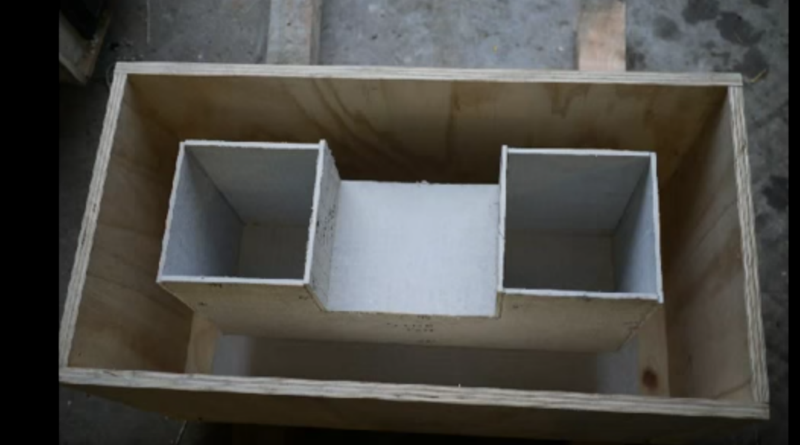
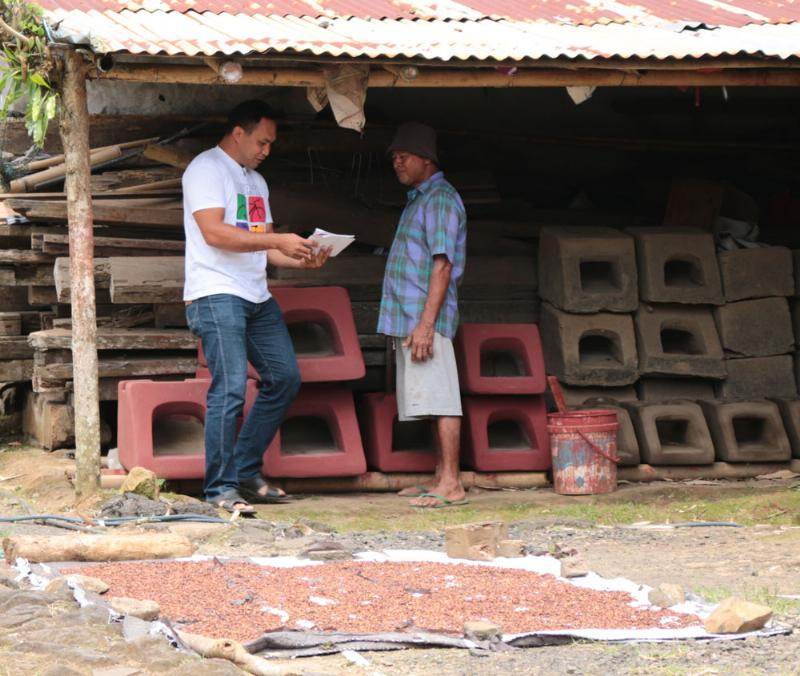











 1
1





|
Don't listen to Steve. Just read this tiny ad:
Rocket Mass Heater Jamboree And Updates
https://permies.com/t/170234/Rocket-Mass-Heater-Jamboree-Updates
|




